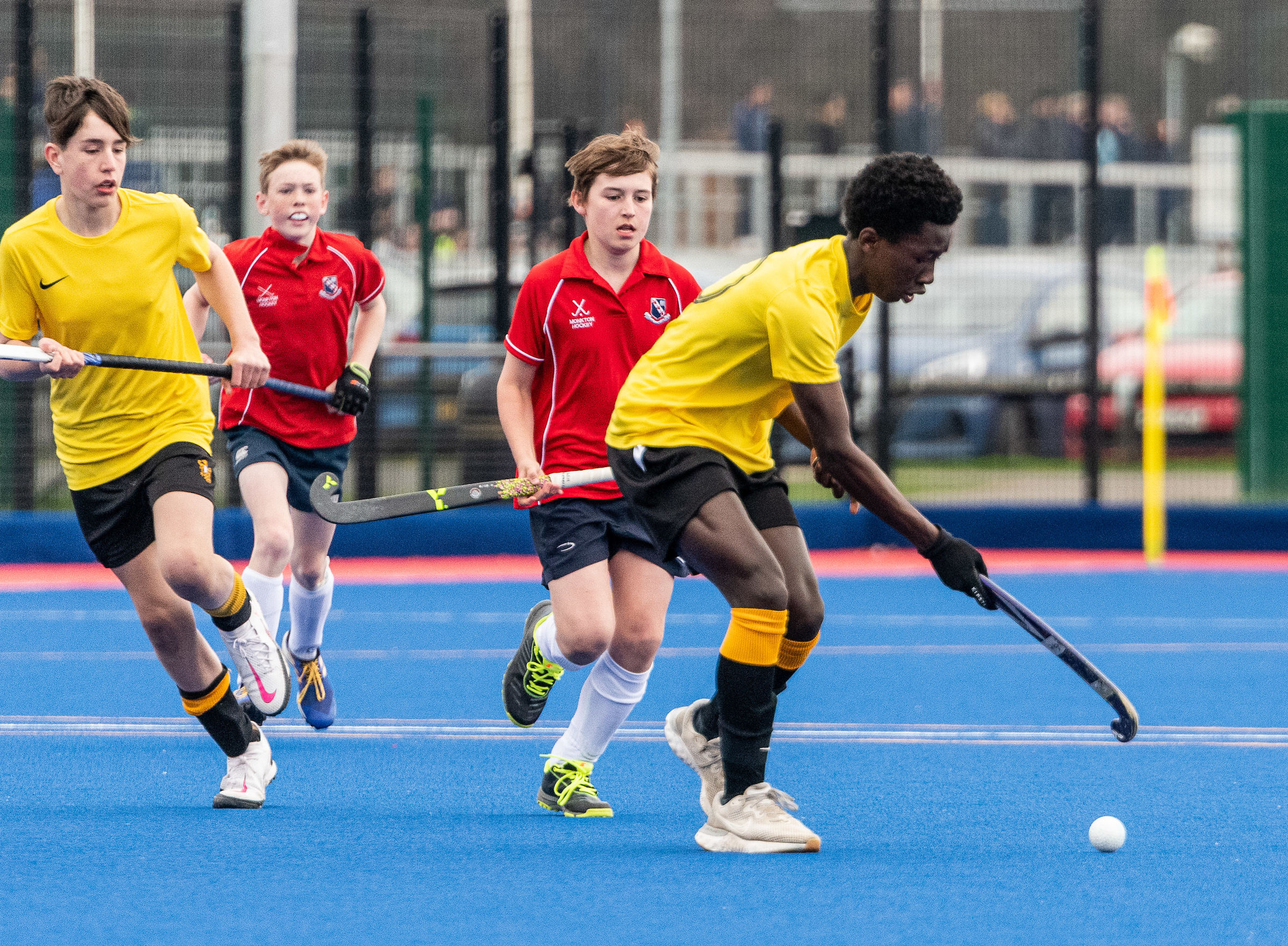The Hockey Paper and our readers pose questions to England Hockey CEO Nick Pink on its new strategy, which promises to make the sport more visible, relevant and accessible over a five-year period
The new Pathway system for junior players into the Talent Academies has shifted the more “privileged” and better players to the Talent Centre clubs, writes James Cracknell.
The main beneficiaries are the private schools that can integrate their hockey programmes into the nearby Talent Centre, in some cases laying on coaches and mini buses. This has:
- Been disastrous for membership numbers and quality in smaller local hockey clubs, (especially at U18)
- Reduced the exposure to quality hockey and accessibility for state school children into the pathway
- Increased the “open secret” about bias of the selectors that are also teachers in private schools
***
The Talent Academy is another failed attempt at England Hockey trying to implement a talent pathway process, emails Mike Jones
Players and parents are travelling up to three hours up and back to training sessions; 15 year olds getting home at 11pm on weekday evenings in their GCSE year. A Level students are simply choosing not to do it. It is an enormous administrative burden on host clubs who end up having to spend more time on juniors from other clubs than their own. And all of this for the unspoken incentive of tempting those juniors to join their club. So, why does England Hockey persist in inventing these terrible pathway programs, designed by people often with no knowledge of the sport, when the reality is that 75% of the TA functions should be the responsibility of clubs in the first place as happens in Europe? Why waste money on this and not simply help clubs do it for themselves?
Nick Pink: It’s good to have these challenges at this stage because we’re still in the early stages of the new talent system.
As you’re aware, we’re into the third year of the new talent strategy. One of the reasons that we made the change was exactly the points James makes, which was absolutely the connectivity for general talent to develop and the opportunity for young people with a talent in the sport to have that opportunity to succeed through the pathway.
And previously we used to have 16 performance centres running nationally, and there’s some really good things going on there. So that wasn’t necessarily the main reason.
But what we recognised was that it wasn’t embedded into the system, the hockey system, which is club based. So, we absolutely wanted to make sure that clubs were at the heart of our new strategy.
But secondly, in our talent system and our talent strategy, they are right at the heart. So, the 60 or so talent centres that we currently have, the 17, 19 now talent academies that we’ve got running are club based.
Why does that make a difference, particularly in answer to some of James’ questions?
Because what it gives is greater reach and greater accessibility for talented young people to access the sport. In the survey that we carried out this year to those young people involved in the talent system this year, 80% of players talked about travel less than 60 minutes.
Now, it’s not going to cover everybody, because we’re still developing the system – we want to have over 100 clubs involved in the talent system eventually, over the next couple of years, but we’re starting to evolve and get there.
If you just think about the geography of the country for a moment, naturally those 16 previous Performance Centres were pretty much run down the spine of the country and then you’ve got the edges if you like having to travel even further, what we’re now seeing with the geography and the geographical spread of the talent system is we’re starting to get into all the areas of the country and not only just our 8 areas from an England Hockey perspective, but also right into the reach of the different parts of the nation.
That’s really important in terms of that accessibility point and that will help in terms of some of the challenges that James was talking about.
There’s no doubt that independent schools offer and invest significantly in the sport of hockey as they do in other sports but this is primarily the reason that we need to increase the amount of contact time in the Talent Centres and the Talent Academies and we’ve also got initiatives which access and target 130 state schools, young people in particular that attend state schools, that take part in our talent system.
Each Talent Academy, so the top of the pyramidic structure if you like, offer free of charge and discounted prices for players, particularly those from disadvantaged backgrounds and each of our areas have hardship funds to try and support. So we’re trying to do as much as we can to try to break down those challenges, and I think we’re on the right track, I really do and actually with the new talent system, it’s still early days.
***
Nick Pink: This is about embedding the talent systems into clubs nationally. This is about ownership locally, this is about ownership in club space, the governance changes that preceded the talent system changes if you like, were about giving more autonomy to clubs and breaking down the amount of travel time that recreational players have.
That was a big part of the feedback that we had. And the same here, this is about accessibility, accessibility of talent, broadening the diversity of our talent system and absolutely the TA functions as Mike talks to and also the Talent Centre functions all operate in the club space, in the club world.





Part of this is easy to solve. Implement the ‘Talent Schools’ initiative as was planned and only allow state or non-“Talent School” players to join the TAs. The kids at the “Talent schools” are already receiving the additional coaching and competing against high performance teams. This would open up the TAs to state school players who do not get these opportunities otherwise. This wouldn’t completely solve the issues of TAs taking players away from smaller clubs etc but would surely make sense at these early stages of implementation when there are not enough TA places available yet.
Some of the geographical issues are harder to deal with!
I couldn’t agree more with the comments of James, Mike and Kendra and less with those of Nick Pink, who seems to be in some cloud cuckoo land with regard to the impact TA’s are having. TA’s might look good in glossy pamphlets or in powerpoint presentations, but not in reality.
As predicted by many, TA’s are reducing competition among young players, not increasing it. Players are leaving smaller clubs for TA host clubs, diminishing competition even further. Selection seems to be some sort of secret society and, in my experience, not always based on merit.
Coaching quality is very variable between TA’s and many have the same coaches who coach the TA cohort normally at school and/or club level, so there is little ‘stretch’ or opportunity for players to receive some much needed new perspective. It become narrow and incestuous.
The cost is high (over £1100 at some TA’s). That doesn’t include kit or games where I am. Even if turf hire accounted for £15,000 per year (which is actually more than double what I estimated based on usage and turf hire costs in my area) then that still leaves about £40,000 to account for (25 boys and 25 girls at over £1000 pa each). Surely that doesn’t go to the coaches?!
The big question, rightly raised by Mike in his comments, is why does EH think this will work when none of the big European hockey nations, Germany, The Netherlands, Belgium, have ever done anything similar, yet remain constantly at the top of the hockey pyramid?
As Norman Hughes, in another of your recent articles, focused on – better coaching in clubs, real, not imagined, inclusivity, and proper competition would work better. He also commented on why don’t we do what works so well in Europe.
I’d agree.
I’m Bemused.
Last summer my daughter attended the England trials, sadly the organisation and quality of event had declined. Rather than identify players to benefit from TA and comeback developed for trials it’s just seen as a catch all for those not selected.
There are private coaches that are now promising to develop players & by pass the TA system altogether as it is seen as a costly waste of time, subject to selection bias and doesn’t prepare them for England trials.
He mentions 130 state schools. Can we see a list of them?
I’m fairly confident these are selective state schools, hardly broadening reach!
In recent photos of junior international teams the lack of diversity & schools was striking. This same discussion was had 25 years ago & EH seem to be playing lip service to improving GB diversity with little change over these years.
To create proper diversity and to include state schools you need to have a proper strategy not just some sound bites.
Nothing changes it seems. 7/8 years ago my daughter was attending PC mid week sessions at a top private school, getting home at 11pm, in GCSE year, and the selector for Futures Cup players was another public school hockey director, who surprise surprise selected pupils from his own school to go through. Bias, whether unconscious or not, is obvious to onlookers. Life isn’t fair, and these kids learnt it early on.
I’m not sure what the answer is.
Would help for these centres to be run independently of school or club biases, though this will never happen whilst the higher clubs use them as scouting opportunities. Often steel better players but then never consider costs to the individual to move to the club which often is major as includes travel etc. Also worth noting EH fast tracking these big club coaches and players onto the ACP programme over genuine club coaches, so these can run these centres. Old boys/ girls network again EH have a joke leadership, have no interest in developing hockey other than maintaining numbers to maintain funding for their own jobs.
Bemusedof makes valid points. Someone following multiple conversations predicted it!
When the outcome was so so predictable and EH and hockey generally was given fair warning, why as hockey did we allow EH to walk many youngsters off a cliff?
Hockey people “stay stum” when they should stand up.